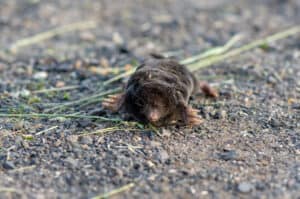
Moles are members of the Talpidae family, whose name means “mole” in Latin. Moles inhabit North America, Europe, and Asia and live primarily underground. Their cylindrical bodies are covered in velvet. They have tiny eyes and ears, reduced hindlimbs, and short, muscular forelimbs with large digging paws. Want to learn more about these extremely resourceful creatures? Keep reading to discover 10 incredible mole facts!
1. There Are Seven North American Mole Species

To locate their underground prey, moles constantly excavate and leave behind a maze of tunnels.
©iStock.com/Tramper2
North American moles include seven distinct species:
- The Eastern Mole (Scalopus Aquaticus)
- The Hairy-Tailed Mole (Parascalops Breweri)
- The Star-Nosed Mole (Condylura Cristata)
- The Broad-Footed Mole (Scapanus Latimanus)
- The Towsend’s Mole (Scapanus Townsendii)
- The Coast Mole (Scapanus Orarius)
- American Shrew Mole (Neurotrichus Gibbsii)
2. Moles Spend Most of Their Time Digging

At regular intervals, moles will stop tunneling to push the loose soil to the top, creating molehills.
©Agnieszka Bacal/Shutterstock.com
To find the worms and grubs they eat, moles spend much of their time underground. Mole tunnels often follow the contours of man-made features, such as fences and building footings. Moles have been clocked at digging as fast as 15 feet per hour. At regular intervals, moles will stop tunneling to push the loose soil to the top, creating molehills.
3. Moles Can Smell In Stereo
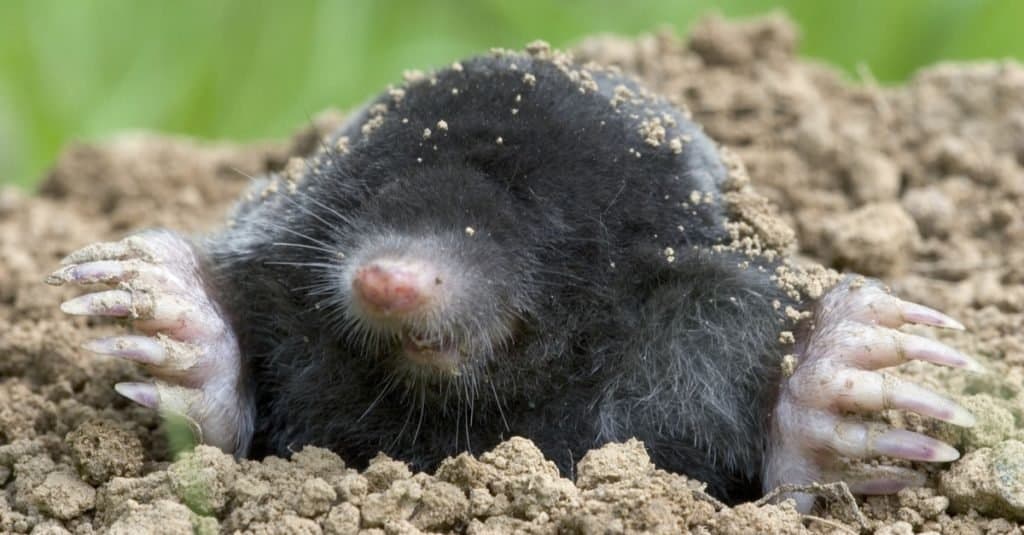
Moles smell separately with each nostril allowing them to find the source of odors.
©Bildagentur Zoonar GmbH/Shutterstock.com
In fact, moles are among the few species that can smell in stereo, meaning each nostril smells separately. That’s why they can instantly pinpoint the source of odors and estimate their path. The capability to smell in stereo is especially useful for moles since it aids them in locating food and protecting themselves from danger.
4. Moles Only Eat Insects
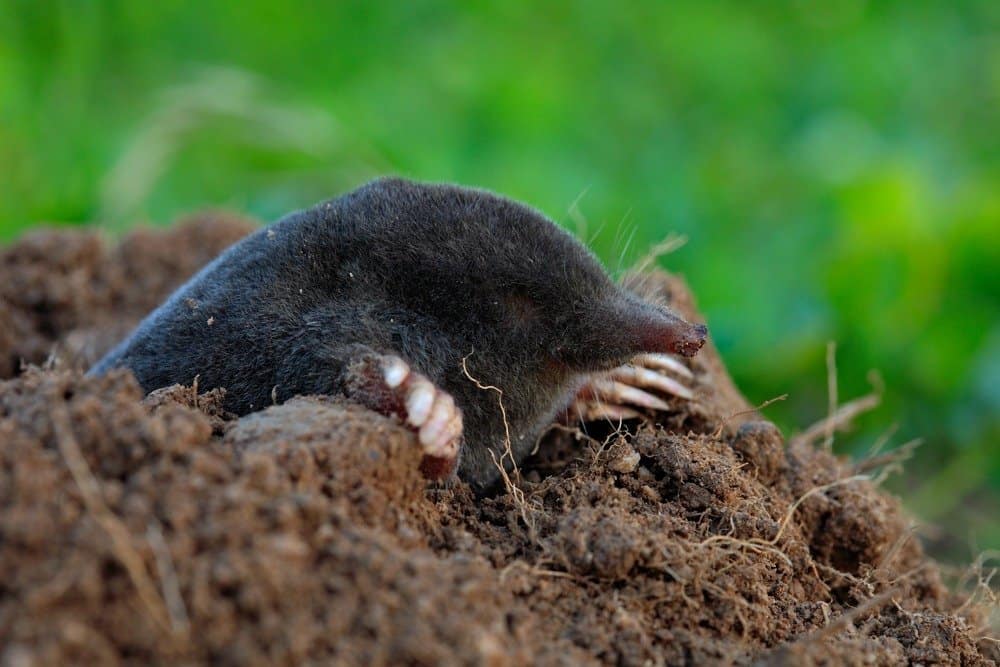
As insectivores, moles get between seventy and one hundred percent of their daily caloric needs from grubs, worms, and insects they eat.
©Ondrej Prosicky/Shutterstock.com
Moles have a bad reputation for eating seeds and roots, even though they are insectivores and don’t normally eat plant matter. Other plant eaters, such as voles, use the mole’s deserted hunting tunnels; therefore, they are the true offenders. However, moles’ tunneling can kill plants by displacing plant roots.
As insectivores, moles get between seventy and one hundred percent of their daily caloric needs from grubs, worms, and insects they eat. To locate their underground prey, moles constantly excavate and leave behind a maze of tunnels. Digging for food must take a lot of energy, which could explain the mole’s voracious hunger.
5. One Solitary Mole’s Range Can Extend Up to 2.7 Acres

Moles dig vast networks of tunnels to eat and live in.
©Maksim Safaniuk/Shutterstock.com
A mole’s underground home consists of a vast network of tunnels with specialized chambers for sleeping, eating, and foraging. Mole rodents are obligate fossorial mammals, meaning they must live and graze in underground tube systems. They thrive in the loose, damp soil found in meadows, orchards, fields, and woodlands where there is enough shade from nearby plants.
6. Moles Are Most Active After A Rainy Period
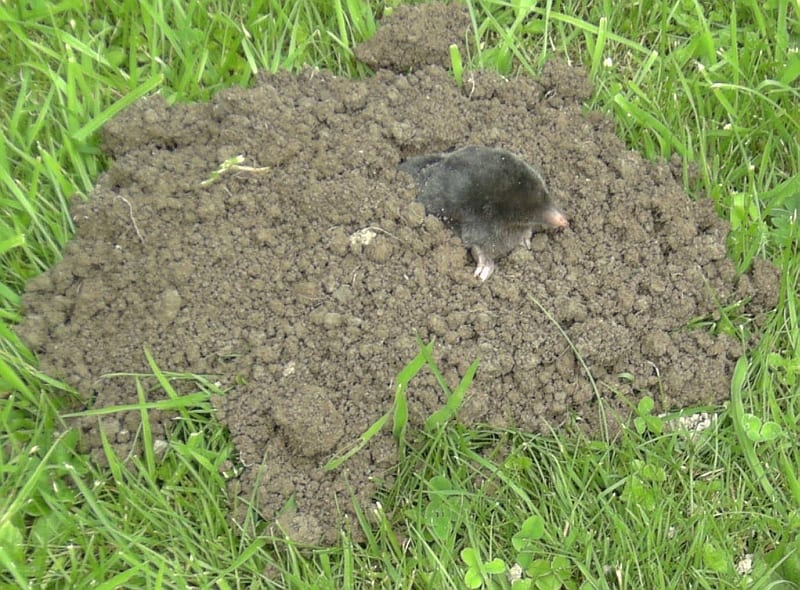
Moles like to dig in soft, wet soil, making rain-drenched soil perfect for them.
Daytime and nighttime activity are similar for moles. Although active year-round, moles may reduce their foraging activity during excessive heat or cold periods. They are especially active after rain or irrigation when the earth is soft and easy to dig in.
7. Moles Can Survive a Long Time Underground
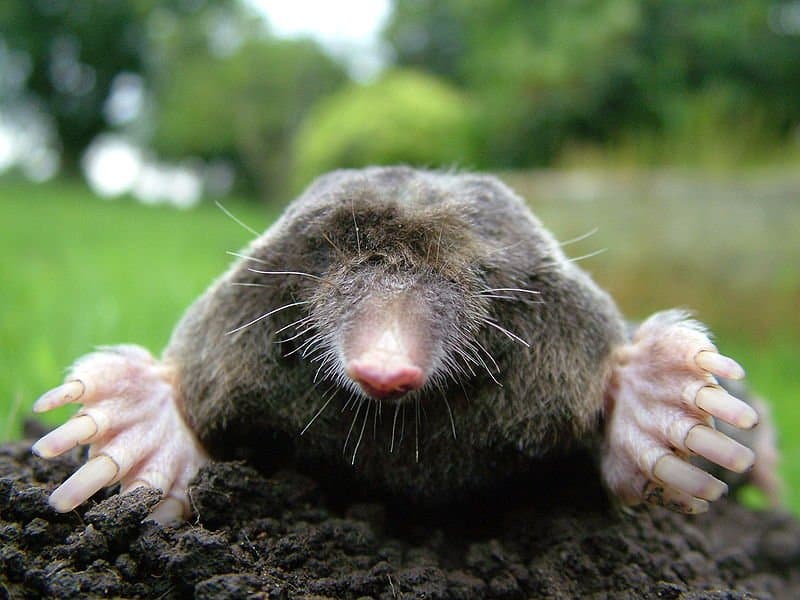
The mole’s hemoglobin is specially adapted to allow it to function in underground low-oxygen conditions.
During cold or dry weather, moles often have to go further underground to find a suitable food supply. The mole’s hemoglobin is specially adapted to allow it to function in the low-oxygen, high-carbon dioxide conditions found underground.
8. Moles are Alone Most of the Time
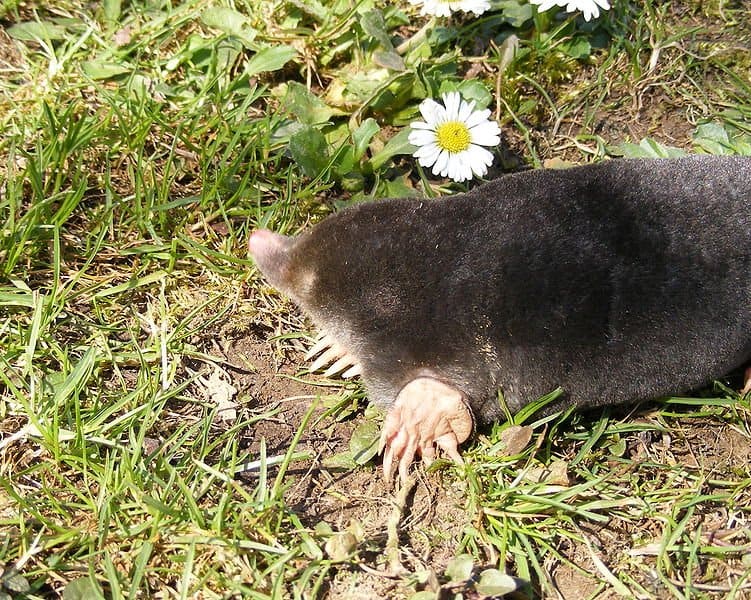
Moles are typically solitary creatures.
In the wild, moles are primarily solitary creatures that come together solely to reproduce. Only the star-nosed mole has been confirmed to exist in large groups called colonies. Compared to populations of other mammal species, mole densities can vary from one mole per six acres to as many as five moles per acre.
9. Despite Their Looks, Moles Are Not Rodents
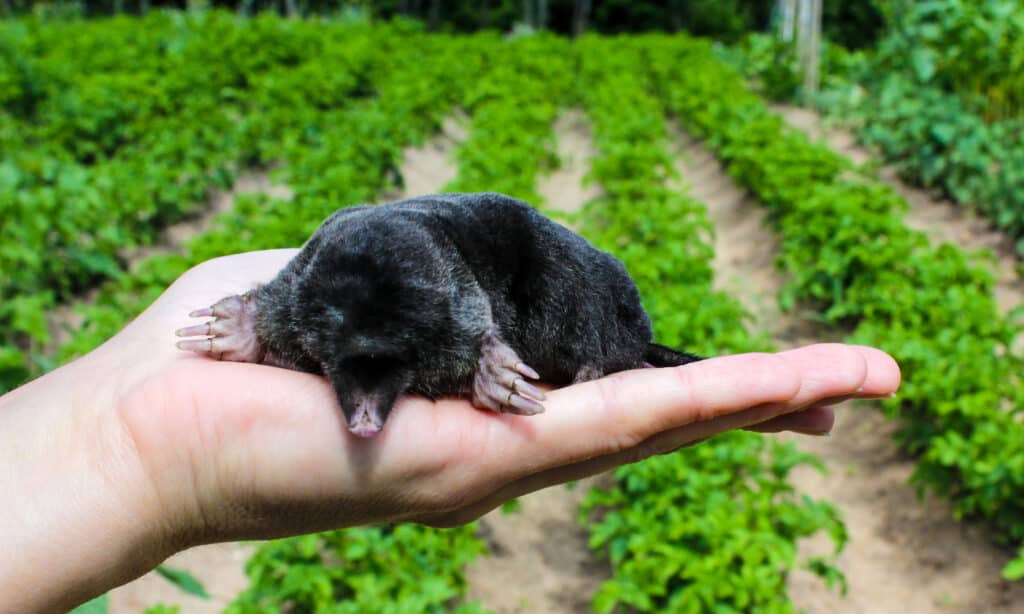
Moles are not rodents.
©Vita Serendipity/Shutterstock.com
To the surprise of many, moles are not rodents but rather insectivores. While they may look like mice or rats, moles are actually a different kind of mammal altogether. When it comes to eating insects, they are more closely related to bats. A mammal that specializes in eating insects is called an insectivore. They are small critters that burrow underground nearly all their life, wreaking havoc on residential gardens and lawns in their never-ending search for sustenance.
10. A Mole’s Spit Is Poisonous

Moles paralyze worms and insects with poison in their saliva.
©Carmen Rieb/Shutterstock.com
Worms are paralyzed by poison in mole saliva, allowing the mole to collect and store them as food. To get the dirt out of a worm’s stomach, a mole can squish an earthworm with its forepaws before eating it.
Related Animals:
The photo featured at the top of this post is © iStock.com/juefraphoto
Sources
- Wikipedia, Available here: https://en.wikipedia.org/wiki/Mole_(animal)
- The National Wildlife Federation, Available here: https://www.nwf.org/Educational-Resources/Wildlife-Guide/Mammals/Moles
- Live Science, Available here: https://www.livescience.com/52297-moles.html
Thank you for reading! Have some feedback for us? Contact the AZ Animals editorial team.




